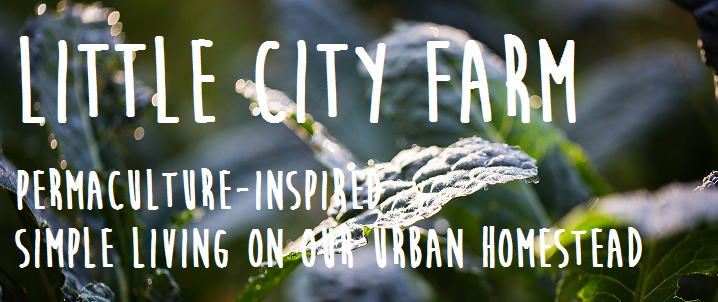
Today was our daughter's first birthday! We had a typical homesteading day full of projects (harvesting herbs, shelling peas, preparing for canning pickles, packaging soaps, working on our strawbale house in preparation for plaster work starting this weekend!), but we tried to make time for all her favourite activities - crawling in the grass looking for bugs, clover flowers and dandelions, picking raspberries to nibble, feeding the chickens and gathering the eggs, helping pull weeds, digging in the dirt and planting new seeds...and then taking time to decorate this 100-mile birthday cake. It was decorated with cream cheese-maple icing (no sugar), heart nuts grown in Niagara, and edible flowers and berries from our garden - and it was greatly enjoyed by all of us!
Today we also had a visit from a student in the distance education Food Security certificate program at Ryerson University. She was doing an interview with us for her final paper on urban agriculture. It was interesting to talk to her about the course, and for us to reflect on how and why our homestead has evolved, what obstacles we've encountered along the way, what kind of production we do here, and where we see ourselves going with future projects. This past weekend we had facilitated two workshops at the Hillside Festival on "urban homesteading: sustainable living in the city", which also both generated excellent conversation with participants and a huge turn-out (more than 50 people total!). We feel lucky to get to talk about the homesteading life, and continue to be encouraged by the ideas and suggestions of others who we meet.
Some homesteads/urban agriculture initiatives that have inspired us include:
- Path to Freedom (Pasadena, CA)
- Rhizome Collective (Austin, TX)
- Fairview Gardens Farm & Centre for Urban Agriculture (Santa Barbara)
- City Farmer (Vancouver, BC)
- urban agriculture in general in Portland, OR (especially city chickens and fruit harvest)
- Life Cycles (Victoria, BC)
- FoodShare (Toronto, ON)





















































